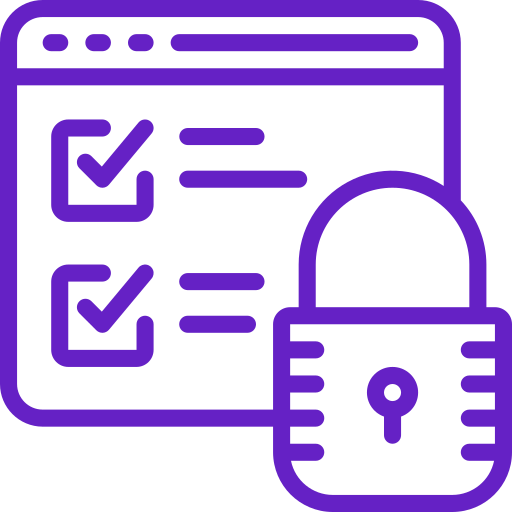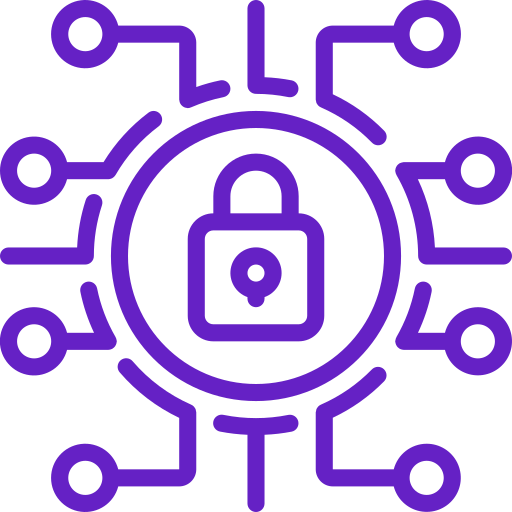What is Blockchain Technology?
Blockchain technology is a decentralized and transparent system allows multiple parties to maintain a shared digital ledger without a central authority. It enables secure and immutable recording of transactions, making it suitable for various industries and use cases.
Blockchain technology underpins Bitcoin, enabling peer-to-peer transactions without intermediaries. It records transactions in a secure, transparent public ledger, making alterations nearly impossible.
Beyond cryptocurrencies, blockchain is used in industries like supply chain management. For example, IBM Food Trust enhances transparency in the food supply chain, allowing stakeholders to track products from farm to table, reducing fraud, and increasing safety. Blockchain’s decentralized and secure nature has wide applications across industries, improving transparency, security, and efficiency.
Blockchain Technology aims at removing this third-party involvement and keeping the transactions only limited to the sender and the receiver. Taken From Article, Blockchain Technology Industry Solutions and Applications
Evolution of Blockchain in Enterprises
Blockchain technology traces its origins back to the late 1970s when computer scientist Ralph Merkle patented Merkle trees, a data structure that links blocks using cryptography. In the late 1990s, Stuart Haber and W. Scott Stornetta utilized these trees to create a tamper-proof document time stamping system, marking the first significant instance of blockchain.The evolution of blockchain can be categorized into three generations:
First Generation – Bitcoin and Cryptocurrencies
In 2008, an anonymous entity known as Satoshi Nakamoto introduced blockchain technology in its modern form through the Bitcoin white paper. This system utilized 1 MB blocks for Bitcoin transactions, establishing foundational features that remain integral to blockchain today.
Second Generation – Smart Contracts
Following the emergence of cryptocurrencies, developers began exploring blockchain applications beyond digital currency. Ethereum's creators introduced smart contracts, enabling automated transactions and asset transfers on the blockchain.
Third Generation – The Future of Blockchain
As organizations continue to discover new applications for blockchain, the technology is evolving to address scalability and computational challenges. The potential for innovation is vast as industries embrace this ongoing blockchain revolution.
What are the Key Features of Enterprise Blockchain?
Enterprise blockchain refers to applying blockchain technology specifically for businesses and organizations. It offers several key features that differentiate it from public or permissionless blockchains. Here are some of the critical features of enterprise blockchain:
-
Decentralization: Control and decision-making are shifted from a centralized authority to a distributed network. Transparent operations reduce the need for trust among participants while preventing any single participant from exerting control that could compromise the network’s functionality.
-
Immutability: Once recorded, transactions on the blockchain cannot be modified. Errors are addressed by adding a new reversing transaction, ensuring both the original and correction remain visible to all participants.
-
Consensus: Blockchain systems rely on predefined rules requiring the majority of participants in the network to agree before recording new transactions, ensuring secure and collaborative validation.
These key features make enterprise blockchain well-suited for businesses and organizations seeking to leverage blockchain technology while addressing their specific scalability, privacy, control, and regulatory compliance needs.
How Businesses Benefits from Blockchain
Blockchain and Distributed Ledger Technologies (DLTs) offer businesses several advantages, such as reducing risk, cutting compliance costs, enabling cost-efficient transactions, automating contracts, and enhancing transparency. Here's a brief overview:
Reduced Risk & Lower Compliance Costs: Blockchain can streamline processes like "know your customer" (KYC), reducing costs and improving efficiency. A new DLT system requires only one KYC verification per customer, leading to savings and better customer experiences.
Cost-Efficient Transactions: Blockchain can digitize records and enable faster transactions. For example, a paperless letter of credit deal using blockchain reduced processing time from 10 days to under 4 hours.
Automated & Secure Contract Fulfillment: Smart contracts, self-executing under specific conditions, automate processes. For instance, a retailer using blockchain for supply chain management improved product traceability and reduced human effort.
What are the types of Enterprise Blockchains?
There are several enterprise blockchains, each with characteristics and suitability for different use cases. The main types of enterprise blockchains include:
Public Blockchain
Public blockchains are open and permissionless, allowing anyone to join the network, participate in consensus, and validate transactions. While not specifically designed for enterprise use, some organizations may leverage public blockchains for specific applications. Public blockchains, such as Bitcoin and Ethereum, provide a high level of decentralization and transparency but may have limitations regarding scalability and privacy.
Private Blockchain
A private blockchain, also known as a "permissioned blockchain," is restricted to a specific group of participants permitted to participate and operate the network. These participants are typically known and trusted entities, such as consortium members or employees within an organization. Private blockchains offer more privacy, scalability, and control than public ones. Examples of private blockchain platforms include Hyperledger Fabric and R3 Corda.
Consortium Blockchain
Consortium blockchains are a variant of private blockchains where multiple organizations come together to form a shared blockchain network. Consortium members jointly manage the network and participate in consensus mechanisms. Consortium blockchains are suitable for use cases where multiple entities must collaborate while maintaining a certain level of trust and control. They are often found in industries such as supply chain management and finance.
Hybrid Blockchain
Hybrid blockchains combine properties of public and private blockchains. They provide a flexible architecture that allows certain parts of the blockchain to be public while others remain private. This allows for a balance between transparency and privacy, accommodating various use cases. Hybrid blockchains can enable interoperability between public and private networks or provide selective data sharing between participants.
Federated Blockchain
Federated blockchains, or consortium blockchains with enhanced governance, are designed for situations where a limited number of pre-selected nodes or validators control the consensus process. This model provides higher scalability and faster transaction confirmation times than fully decentralized blockchains. Federated blockchains are commonly used in enterprise environments where efficiency and performance are crucial.
Permissioned vs. Permissionless
While not distinct types of blockchains, the permissioned vs. permissionless categorization refers to the level of access and participation in a blockchain network. Permissioned blockchains require participants to be granted explicit permission to join and operate the network, ensuring a controlled and trusted ecosystem. On the other hand, permissionless blockchains allow anyone to join and participate, emphasizing openness and decentralization.
It's important to note that the choice of blockchain type depends on the specific requirements, privacy needs, scalability concerns, and governance considerations of an enterprise use case. Enterprises may combine different types or customize existing blockchain frameworks to meet their unique needs.
The insurance industry and customers are affected due to fraud reports and fraud insurance accounts for property and casualty losses. Taken From Article, Use Cases of Blockchain for Insurance Industry
What are the benefits of Enterprise Blockchain?
Enterprise blockchain offers several benefits that can positively impact businesses and organizations. Here are five key benefits of enterprise blockchain:
-
Enhanced Security: Blockchain ensures robust security for digital transactions, addressing concerns about manipulation or fraud. By utilizing cryptography, decentralization, and consensus, blockchain creates a secure and tamper-resistant system. With no central point of failure, individual users cannot alter transaction records.
-
Increased Efficiency: Blockchain streamlines business-to-business transactions, reducing delays and operational bottlenecks, particularly when compliance and regulatory bodies are involved. The use of transparency and smart contracts accelerates and enhances the efficiency of these transactions.
-
Quicker Auditing: Blockchain's chronological and immutable record-keeping allows for faster and more secure auditing. The transparency of transaction data simplifies the process of generating, exchanging, and archiving e-transactions, making audits much quicker and more efficient.
These benefits make enterprise blockchain a compelling technology for businesses and organizations seeking to optimize processes, improve security, foster collaboration, and gain a competitive edge in various industries. However, it's important to note that implementing an enterprise blockchain solution requires careful planning, consideration of specific use cases, and addressing technical and regulatory challenges to realize these benefits fully.
Key Requirements for Effective Blockchain Enterprise Solutions

Privacy
Enterprise blockchains utilize a permissioned approach, ensuring that only authorized users can access sensitive data, which helps maintain confidentiality and adhere to regulatory standards.

Security
While blockchain offers inherent security features, enterprises must implement additional protections such as KYC and AML protocols to prevent breaches and safeguard data integrity.

Throughput Time
Designed to handle high transaction volumes, enterprise blockchain solutions prioritize low throughput times, ensuring efficient operations without compromising performance.

Operational Cost
Cost-effectiveness is vital; enterprise blockchain solutions should feature predictable transaction fees and low operational costs, enabling organizations to manage budgets effectively while maximizing ROI.
A distributed database that maintains a continuously-growing list of ordered records called blocks. Taken From Article, BlockChain App Development with Serverless
Challenges to Enterprise Blockchain Adoption and Solutions to Overcome Them
Implementing enterprise blockchain solutions can be accompanied by several challenges. Here are some common challenges that organizations may face:
Security and Scalability Challenges
Many robust blockchain systems face security and scalability issues, making it difficult for businesses to find solutions tailored to their specific needs.
Solution: Partner with top blockchain development firms to design customized solutions. Collaborating with experts ensures that security and scalability concerns are addressed, allowing the platform to seamlessly meet business requirements.
Knowledge Gap
A key obstacle for businesses is the lack of blockchain expertise needed to manage and deploy blockchain systems effectively.
Solution: Focus on talent acquisition and skill development to bridge the knowledge gap, ensuring the successful implementation and management of blockchain systems through a skilled workforce.
Problems with Reorientation
Shifting from traditional business models to blockchain requires significant adjustments, and resistance from stakeholders can slow down the adoption process.
Solution: Highlight successful pilot projects and adopt a phased approach to implementation. Sharing the organization's success stories and gradually introducing blockchain helps ease the transition, gain stakeholder support, and ensure a smoother adoption of blockchain technology.
.webp?width=1921&height=622&name=usecase-banner%20(1).webp)


